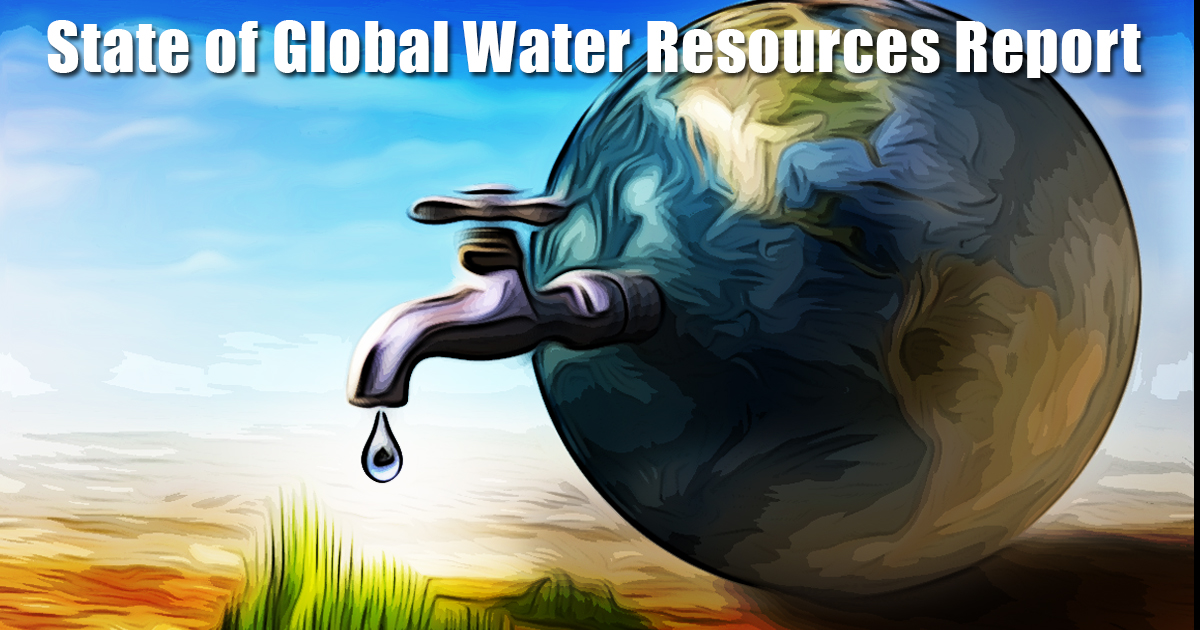
Context (DTE): The World Meteorological Organization (WMO) published the State of Global Water Resources Report, highlighting that 2023 marked the driest year for global rivers.
Contributing Factors
- Increased Water Demand: The report pointed out that growing agricultural and industrial demand placed added pressure on river systems, worsening the already low water levels.
- Trend in Dry Areas: Over the years, there has been a noticeable increase in dry regions, with 2023 standing out as the driest year in the past 30 years, followed by 2021 and 2015. For instance, Argentina saw a 3% GDP reduction, and water levels in both the Amazon and Lake Titicaca reached record lows.
- Transition from La Niña to El Niño: The shift from La Niña (2022-2023) to El Niño (2023) played a significant role in this exceptionally dry and warm year.
- Glacier Impact: 2023 marked the second year in a row where glaciers suffered the greatest mass loss ever recorded over the last 50 years.
- Groundwater Levels: In 2023, groundwater levels in 19% of monitored wells were significantly below average, with regions like Western and Southern Australia particularly affected.
- Below-average Inflows: Increased dam and reservoir construction has contributed to reduced inflows into rivers, as seen in Australia’s Murray-Darling River and North America’s Mackenzie River, both of which recorded below-average inflows.
Role of Climate Change
- Soil Moisture: Elevated global temperatures resulted in below-average soil moisture levels throughout 2023 in vast regions, including North America, South America, North Africa, and West Asia.
- Water Scarcity: UN Water reports that 3.6 billion people currently face water shortages for at least one month each year, and this number could rise to over five billion by 2050.
- Glacial Retreat: As glaciers retreat due to rising temperatures, an initial increase in river flows may occur, but long-term reductions in water supply downstream are expected as glaciers continue to shrink.
- Changing Precipitation Patterns: Climate change is altering rainfall patterns, leading to increased precipitation in some areas and severe droughts in others. For instance, the monsoon in India has become increasingly erratic.
Way Forward
- Education and Awareness: For example, California’s “Save Our Water” campaign, launched during the 2014-2016 drought, successfully reduced urban water usage by 25% by raising public awareness about water conservation.
- Efficient Water Use: Seattle’s “Water Smart” program offers rebates for adopting low-flow fixtures like toilets and showerheads, promoting water efficiency.
- Rainwater Harvesting: In Rajasthan, widespread rainwater harvesting systems are in place for residential and commercial purposes, providing water for irrigation and non-potable uses.
- Wastewater Recycling: Singapore’s innovative NEWater program treats and recycles wastewater for industrial and potable uses.
- Sustainable Agriculture: Israel’s drip irrigation technology has revolutionized agriculture in arid regions, optimizing water use and increasing efficiency.
- Conservation Policies: The European Union’s Water Framework Directive fosters sustainable water use across member nations, promoting integrated water management.
- Community Engagement: In the U.S., the “One Water” initiative encourages community participation in conservation efforts, such as tree planting and watershed cleanups.
- Habitat Restoration: The U.S. Army Corps of Engineers estimates that restored wetlands can store up to 3.5 million acre-feet of water, benefiting regional water resources.
- Integrated Watershed Management: The World Bank’s watershed management projects in Karnataka serve as leading examples of managing water resources in arid regions through integrated strategies.




